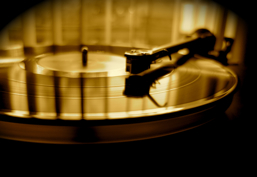Back in 1957 the Verve Jazz Label released the first of three recordings by Ella Fitzgerald and Louis Armstrong. Simply titled Ella and Louis, this mono release stands out as a truly exceptional recording in Jazz history.
Gently swinging and full of romantic songs, this album whisks you away into a “you are there” performance. While Ella and Louis’ singing are the main attraction, the Oscar Peterson Trio (along with Buddy Rich on drums) create a rhythmic backdrop that swings and embellishes at all the right places. With songs like Tenderly, Can’t We Be Friends, and A Foggy Day, this 45rpm reissue from Analogue Productions* captures all the magic of the original recording session.
Dancing Cheek to Cheek clearly demonstrates how these two jazz vocalists playfully sing with each other. Whether its Armstrong’s soft chuckle or Ella’s quiet “oooh” , these micro dynamic details demonstrate the intimacy that will leave you with goose bumps.
Isn’t This a Lovely Day is probably my favorite track on the album. The Oscar Peterson Trio plays so tastefully behind Ella and Louis. A perfect example is Herb Ellis accenting Armstrong’s vocals with gentle guitar picking. Once Ella sings out and sustains Louis Armstrong’s trumpet follows obediently with improvisational replies.
From the moment the needle hits the vinyl this record pulls you in and turns off your worries. Without a doubt, this record falls on my desert island list!
*Analogue Productions specializes in the original production and reissue of folk, pop, rock, jazz, and blues recordings on vinyl. More importantly, they work with original master tapes and cut records at 45 rpm for the best fidelity. Look for Ella and Louis Again – coming out on 45 June 5, 2012.
-Happy Listening!









